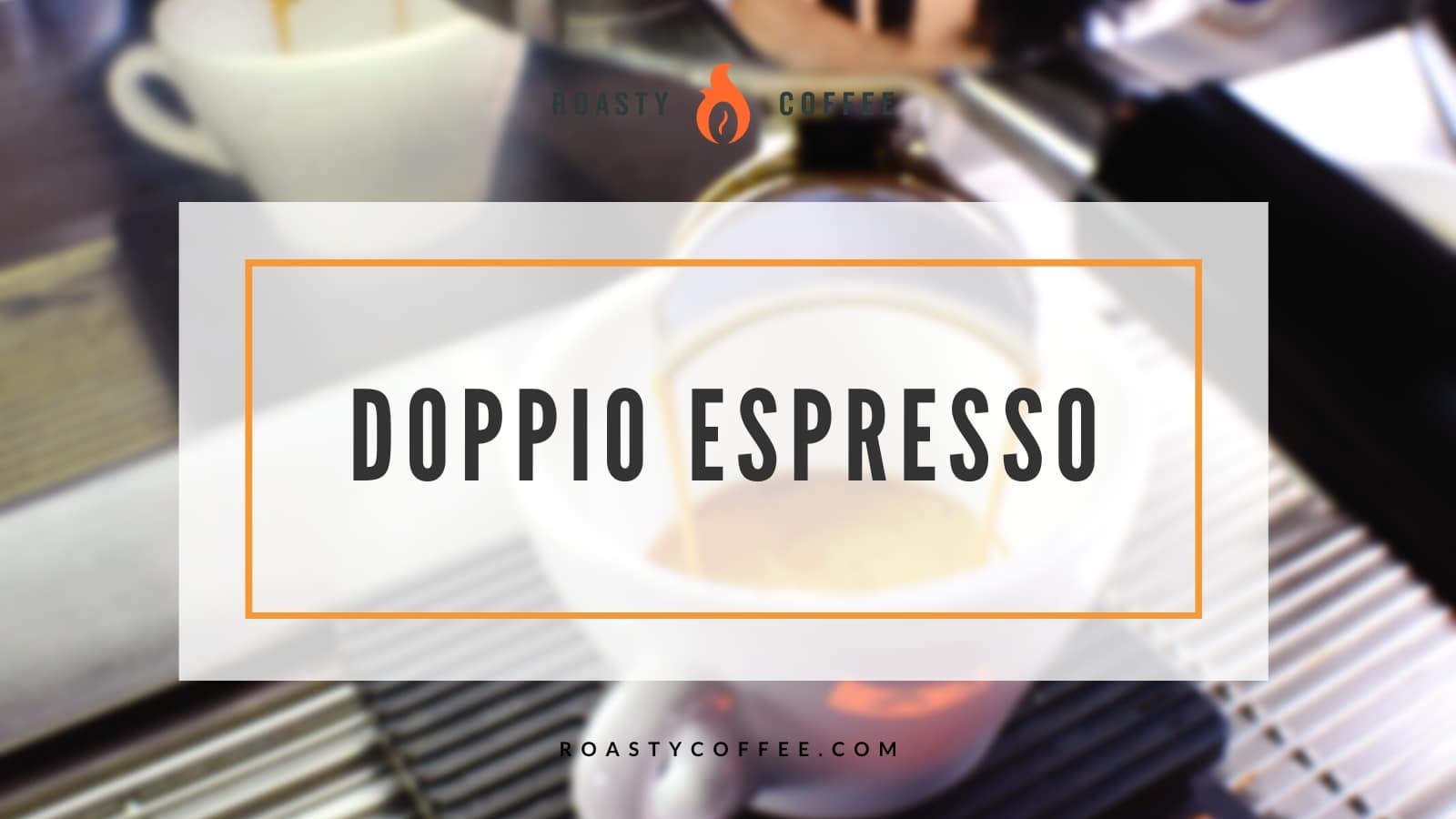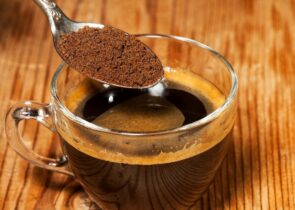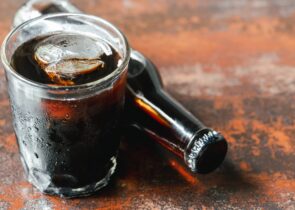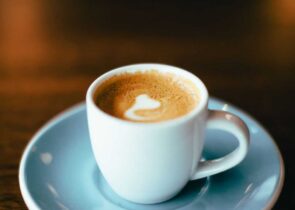Have you ever heard the word “doppio” when someone ordered an espresso and wondered what they were talking about?
Roasty’s breaking down the term for you, explaining what doppio espresso means, how you can brew it at home, and how it differs from other espresso shots.

What Is a Doppio Espresso?
A doppio is just two shots of espresso combined in a single cup, which makes sense given that doppio is Italian for “double.”
You can blend the double shot of coffee with milk and make a latte, cappuccino, or macchiato, but most people enjoy the 60-milliliter cup of coffee black.
How To Make a Doppio Espresso
Pull out your trusty espresso maker and follow these steps to make a double-sized hit of espresso at home.
- Use your coffee grinder to create finely ground espresso beans to run through your brewer. You’ll need around 16 grams of coffee for the doppio shot.
- Then, pour the coffee into a double portafilter and tamp the grounds.
- Put the portafilter into your machine and start the extraction process. It should take anywhere from 20 to 25 seconds, and you should end up with about 60 milliliters of espresso to enjoy.
Doppio Brewing Tips
Remember a few things as you work to perfect your doppio shot-pulling skills.
- Grind size matters. Brewing correctly sized coffee grounds is the key to successful espresso extraction. Only load finely ground coffee beans into your espresso machine. Using any other grind size puts the rich, full-bodied flavor for which espresso is known at risk.
- Water temperature is important. Water temperature matters when brewing authentic espresso. The Specialty Coffee Association states the ideal brewing temperature ranges from 195 to 205 degrees Fahrenheit. Too cold or too hot water can negatively impact the flavor of your espresso, so make sure you’re using a thermometer — one built into your coffee machine or a separate one — to keep track of water temperature while you’re brewing.
- Monitor brew time: The doppio extraction process should take about 20 to 25 seconds. Anything shorter than that leaves you with weak-tasting, watery coffee (gross). A brew time much longer than this time frame gives you bitter, over-extracted joe, and that’s just as disappointing.
- Use a classic espresso machine: Capsule coffee makers like those made by Nespresso have undoubtedly changed the brewing game by allowing java lovers to have a shot of espresso with the push of a button. And manual espresso makers, like the uber-popular AeroPress, let you create a mobile espresso bar of your own. You can use these convenient gadgets to whip up a doppio, but the result won’t be as good as a double shot of espresso extracted from a machine. Don’t sacrifice quality for convenience. Instead, elevate your espresso game by investing in the right equipment.
Where Can You Order a Doppio?
Not having a high-quality espresso machine at home doesn’t exclude you from the doppio experience. Instead of brewing it yourself, you can order delicious doppio espresso from almost any coffee shop. It’s the standard espresso shot size in many café settings outside of Italy.
How To Drink a Doppio
Despite what many diehard espresso coffee enthusiasts may tell you, there is no right or wrong way to enjoy a shot. Or, in this case, two shots. However, the consensus is that your espresso-drinking routine should flow as follows.
- Start with a few swallows of sparkling water. The water cleanses your palate and prepares your taste buds for the flavors they’re about to experience.
- Then, get rid of the crema. The crema, or the layer of foam that tops a freshly pulled espresso shot, is a mark of quality. However, some folks don’t think it tastes good and choose to scoop it off with a spoon.
- Next, stir the shot. This step creates a more balanced tasting experience.
- Finally, sip and savor. Yes, the drink is called a “shot,” but unlike other same-name beverages, you don’t need to gulp it down in one go. Drink it slowly enough to appreciate its bold flavors, but don’t take so much time that it cools down completely.
What Does a Doppio Taste Like?
Doppios can have a range of tastes depending on several factors, one being the roast level of the espresso beans used to brew them.
Take a doppio made from blonde espresso beans, for instance. It won’t have the more intense taste typically associated with spro. Instead, this drink will be mellower to the taste buds and sport slightly sweet notes. On the other hand, a dark roast doppio has a more robust and full-bodied taste than its lighter counterpart, perfect for anyone who wants an intense flavor experience.
No products found.
Coffee bean origin also helps determine how the two servings of espresso will taste. An area’s weather, climate, soil, and farming process dictate its beans’ flavors. For context, let’s compare Burundi coffee to Indonesian coffee. Burundi brews have bright, sweet flavors, while Indonesian joe has earthy, sometimes chocolatey notes.
Frequently Asked Questions
What Is the Difference Between Doppio and Double Espresso?
The only difference between the doppio and double espresso is the language used to say the drink’s name (doppio is Italian for “double”). Regardless of the word you use to order it, you get the same thing: approximately 60 milliliters of espresso brewed with the standard coffee-to-water ratio — if you were curious, that’s one gram of coffee to two grams of water.
When Is the Best Time of Day To Drink a Doppio Espresso?
Here in the U.S., it’s socially acceptable to have a doppio whenever and however you want — in the morning, after dinner, with milk, black (that means no add-ins). However, Italian espresso culture does things differently. And since Italy is espresso’s birthplace, we’ll consider folks there the authority on everything espresso-related.
Italians’ daily coffee rituals include a lot of espresso — having seven to eight servings* a day isn’t unheard of. But the shots they’re drinking aren’t doppios. Instead, they take their espresso one single shot at a time.
Here’s another fun fact about sipping spro in Italy: coffee with milk is only acceptable in the morning. So, if you want to pair your doppio with steamed milk and have your joe the authentic Italian way, do so before noon.
*A Quick Note
While it’s more than OK to emulate the Italians’ brewing techniques, we don’t recommend you follow their lead in this regard — at least, not every day. The average adult’s recommended daily caffeine intake is 400 milligrams. That’s equivalent to around six single espresso shots.
And remember, some coffee lovers are more sensitive to caffeine than others. If that’s you, we suggest keeping your daily caffeine intake under the recommended dose.
Which Is Stronger: Doppio or Espresso?
The answer to this question depends on what you mean by strong coffee. If you’re talking strength according to flavor intensity, the regular espresso shot and its double-sized counterpart are pretty much the same; they use the same ratio of coffee to water.
The doppio takes the cake if you’re using caffeine content to determine strength. The average single espresso shot has about 64 milligrams of caffeine, while the doppio shot of espresso contains around 120 milligrams.
What Are Three Shots of Espresso Called?
In keeping with the spirit of the other espresso shot names — ristretto, lungo, and doppio, to name a few — the name for three espresso shots is Italian. It’s triplo, which translates to “triple.”
The triplo isn’t a very common coffee choice at most cafés, as baristas would have to adjust the espresso machine and bean grinder settings every time they pulled one. A triple shot also calls for a separate brewing basket; most coffee shops deem that an unnecessary investment.
Though unpopular, triplo espresso isn’t unheard of in the United States, as coffee servings here are usually larger than in the rest of the world. Some U.S. shops even offer the “quad,” or four espresso shots.
Is Doppio the Same as Lungo?
As far as quantity is concerned, doppio and lungo espresso shots are the same, around 60 milliliters. But that’s where their similarities end.
A doppio is two shots of espresso, while a lungo is a single espresso shot made with twice the typical amount of water. In terms of flavor, lungo espresso has a weaker flavor and more bitterness than a doppio. Some love those lungo spro characteristics, but others hate them, preferring a more concentrated coffee taste — like that of the doppio, for instance.
What Is the Difference Between Doppio and Ristretto?
A ristretto is a restricted espresso shot, meaning the person pulling the shot uses less water than normal during brewing. The result is more intense-tasting coffee.
Doppio refers to a double shot of espresso. Baristas don’t alter the coffee-to-water ratio when brewing these; they double both to make twice the quantity of coffee.
Happy Caffeinating!







